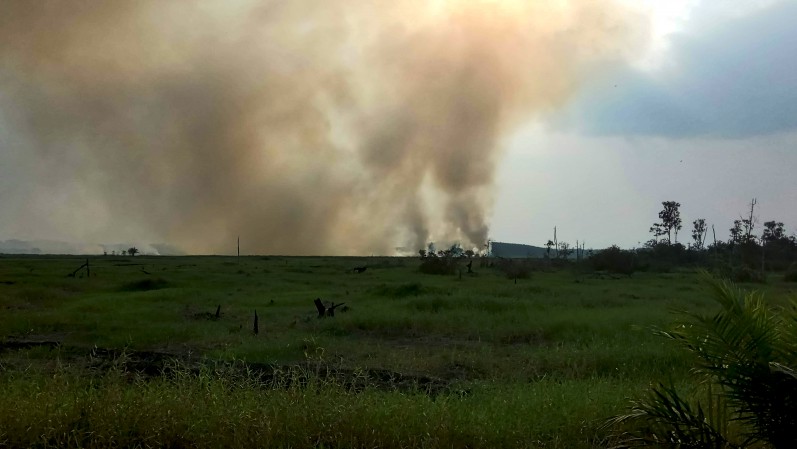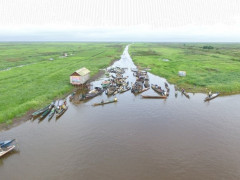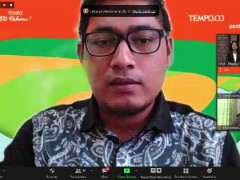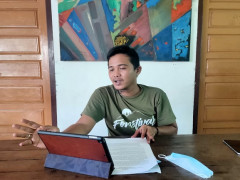The Lives of “Water People” in South Kalimantan
By Simpul Jaringan KalselFires Flare After the Asian Games

Efforts to prevent forest fires during the Asian Games in Palembang, South Sumatra, went relatively well. The coordination between agencies and private companies during this two-week period is commendable. But in the wake of the Asian Games, hot spots and haze have spread through neighboring provinces of South Sumatra, including Riau.
All the fire prevention measures undertaken to ensure a haze-free Asian Games went relatively well, although hot spots remained smoldering in some locations. The rainy season that began in several regions brought hope that fire hot spots would be dissipated. However, hot spots continued to spread further into peat forest areas and oil palm plantations in Riau throughout October, covering a number of areas with smog.
Pantau Gambut monitoring of NASA's VIIRS sensor data revealed 66 hot spots in South Sumatra, Jambi, and Riau – three peatland restoration priority provinces – in October. Of these, 48 were in South Sumatra, 5 in Jambi and 13 in Riau. The hot spots in Riau are especially concerning, because they all occurred in priority areas of the national peatland restoration program.
Information from the field is no less alarming than the spatial data. Residents of Kuala Cinaku Village in Indragiri Hulu reported experiencing thick smog from the end of September to the beginning of October. One resident, Mawi (30), said that from 6–7 a.m., the smog reduced visibility to around 100 meters.
“This is already the fourth day [for us]. The fire was believed to originate from adjoining regency Indragiri Hilir. It has been burning there since six days ago,” he said.
Mawi said the fire has spread to four other villages, namely Tanjung Sari, Pulau Jumat, Sukajadi and Pulau Gelang, and is now approaching Kerumutan Wildlife Reserve. Kerumutan Wildlife Reserve is a peat forest and an important habitat for Sumatran tigers.
“At Tanjung Sari, village officials reported that the fire had burned 100 hectares. Three helicopters have been going back and forth,” Mawi added.
Tanjung Sari resident Tarmuzi, who is also the former village secretary, said that 700 hectares of land have been burned, and the fires are expected to continue to expand uncontrollably. Most of the burnt land is covered by residents’ and companies’ oil palm plantations.
Firefighting operations have been carried out from the air and the ground. In the air, three helicopters were deployed to drop water on the fire. The ground firefighting team included members of the Indragiri Ulu Regional Disaster Management Agency (BPBD) and the Civil Service Police Unit, among others.
“For three days three helicopters have been spraying over there. It's hard to put out. First, because it is on peatland, and second, because there are areas far from water,” Tarmuzi said when contacted from Pekanbaru.
Another Tanjung Sari resident, Rumania (35), confirmed that he could see the smog and smell the distinctive aroma of the burning Riau peat forest for the length of his approximately 51-kilometer journey from Riau’s capital of Pekanbaru to Siak.
“Just as I was passing Ferry Pinang Sebatang Road to Buatan and reached Siak, I could very clearly see the smog,” he said.
Yanti, an analyst at Pekanbaru's Meteorology and Geophysics Agency (BMKG), reported that only northern and western Riau have started to see rain, while the southern end remains dry. As a result, the hot spots raging in Indragiri Hilir and Hulu are still a challenge to extinguish.
“It's still dry. We must be heedful of fires in southern Riau. The rainy season won’t begin here until mid to late October,” he said.
Meanwhile, the Riau BPBD has also noted that, out of eight air quality monitoring reports, two showed unhealthy conditions, namely Siak and Duri Camp (Bengkalis). Five were moderate, and one – Rumbai – showed good air quality.



